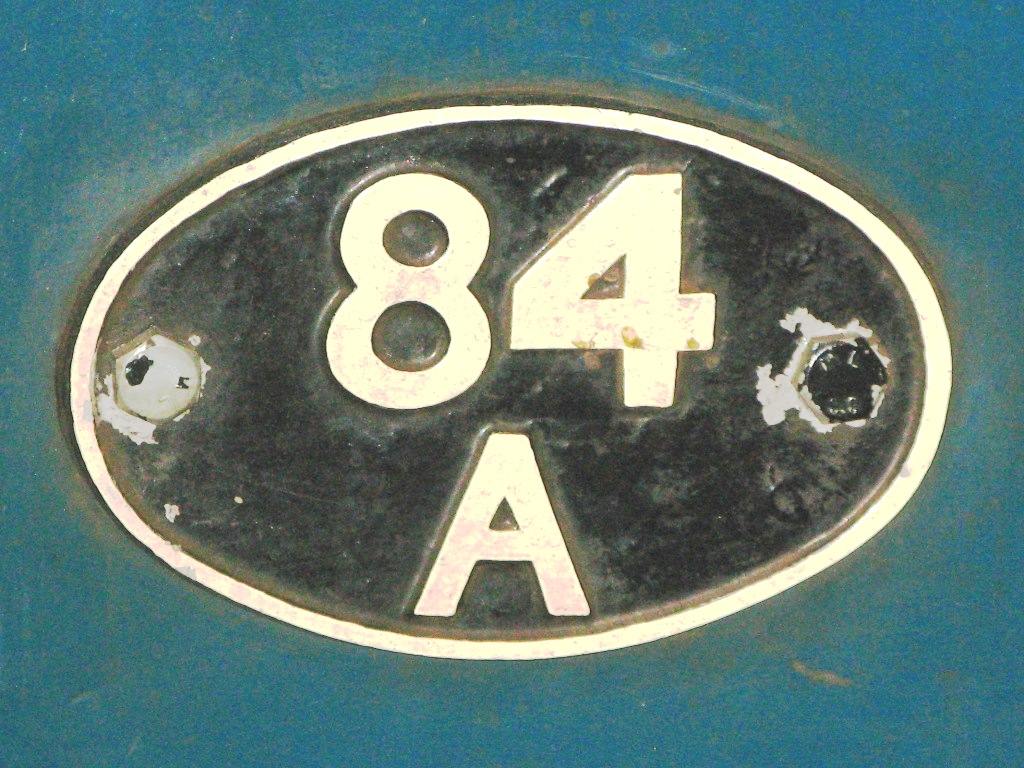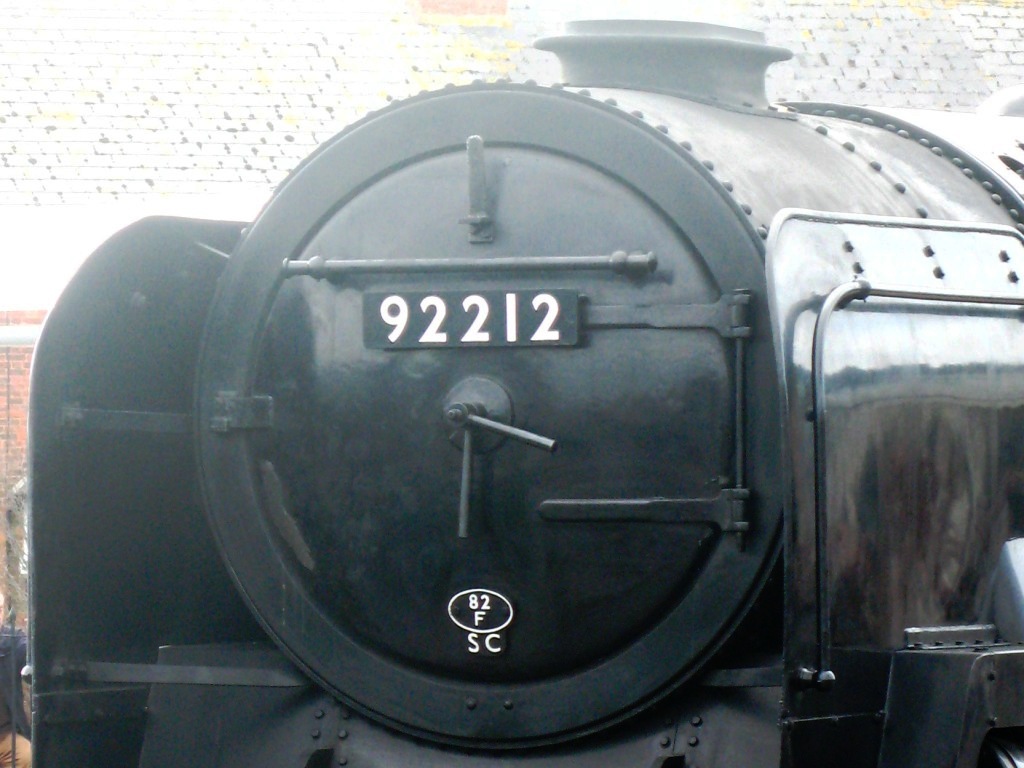List of British Railways shed codes on:
[Wikipedia]
[Google]
[Amazon]

 Each
Each
* {{DEFAULTSORT:List Of British Railways Shed Codes British Railways shed codes British Rail numbering and classification systems British Rail infrastructure

British Railways
British Railways (BR), which from 1965 traded as British Rail, was a state-owned company that operated most of the overground rail transport in Great Britain from 1948 to 1997. It was formed from the nationalisation of the Big Four British ...
shed codes were used to identify the engine sheds that its locomotives and multiple units were allocated to for maintenance purposes. The former London, Midland and Scottish Railway
The London, Midland and Scottish Railway (LMSIt has been argued that the initials LMSR should be used to be consistent with LNER, GWR and SR. The London, Midland and Scottish Railway's corporate image used LMS, and this is what is generally ...
(LMS) alpha-numeric system was extended to cover all regions and used until replaced by alphabetic codes in 1973.
System of codes
The coding system had its origins in a reorganisation of locomotive operation and maintenance on the LMS in the 1933-35 period. It grouped all sheds into districts with a main shed, given the district number followed by the letter A as its code, and subsidiary sheds with the same number followed by B, C, or D etc. Many sheds were also responsible for sub-sheds where day-to-day servicing could be carried out but which lacked the facilities for intermediate or heavy overhauls. The extension of the system to all regions was brought into use in 1950, each region being given a block of district numbers: * 1 – 28 London Midland Region * 30 – 41 Eastern Region * 50 – 56 North Eastern Region * 60 – 68Scottish Region
The Scottish Region (ScR) was one of the six regions created on British Railways (BR) and consisted of ex-London, Midland and Scottish Railway (LMS) and ex-London and North Eastern Railway (LNER) lines in Scotland. It existed from the creation o ...
* 70 – 75 Southern Region
* 81 – 89 Western Region
Many codes changed as districts were re-organised and as regional boundaries changed over the years. For example, the former LMS shed at Goole was initially 25C as part of the Wakefield District. In September 1956 the district was transferred to the North Eastern Region and split between districts 53, 55 and 56; Goole became 53E in the Hull District. This district was itself merged with the York District in January 1960 and so Goole was re-coded again to become 50D. The changes accelerated with the contraction of the railway network and modernisation, both of which reduced the number of locomotives in use. For example, the Inverness district had five sheds and seven sub-sheds in 1950 but these had been reduced to a single shed by 1967.
On 6 May 1973 all the remaining depot codes were replaced by new two-letter codes. These no longer included any kind of district hierarchy, but were more suitable for use with the TOPS operating management computers.
Locomotive allocations
 Each
Each steam locomotive
A steam locomotive is a locomotive that provides the force to move itself and other vehicles by means of the expansion of steam. It is fuelled by burning combustible material (usually coal, oil or, rarely, wood) to heat water in the loco ...
was allocated to a particular shed and an oval, cast metal plate (usually ) with the depot code was bolted to the smokebox on the front of the locomotive. When a locomotive was reallocated to a different shed the plate was taken off and replaced with one from the new shed. Locomotives moved between a parent depot and its sub-sheds did not need this change as they shared the same code.
With the introduction of diesel and electric motive power the system of allocation became changed. Main line locomotives were capable of operating greater distances between servicing and, very often, depots only held the equipment and spare parts for servicing a limited range of locomotive classes. This resulted in them being allocated to a smaller number of depots and reallocations became less common. For instance, the 74 Western Region Class 52 diesel-hydraulics were only ever allocated to six depots and were eventually all based to just one (Laira
Laira – previously recorded as Lare(1591), Lary poynte (1638), the Leerie (1643), and the Lairy (1802) – was originally the name given to that part of the estuary of the River Plym from the Cattewater up to Marsh Mills in Plymouth, Devon ...
) rather than spread around more than 60 depots on the region, although they could often be found at many of these others. This meant that many depots only had allocations of shunting locomotives, and some locomotives did not carry allocation plates. Those that did had them in a variety of positions: Class 42s on the underframe below the cab but near-identical Class 43s on the front next to the left buffer; after 1967 the code was generally painted on the bodywork near the cab door.
On the London Midland Region, from June 1968 until 1973 main line diesel locomotives were given a divisional allocation in which locomotives were allocated to a nominal district, although in practice the locomotives received major attention at the principal depot in the Division. For example, locomotives in the D01 London (Western) Division were effectively based at principal depot Willesden
Willesden () is an area of northwest London, situated 5 miles (8 km) northwest of Charing Cross. It is historically a parish in the county of Middlesex that was incorporated as the Municipal Borough of Willesden in 1933, and has forme ...
. Other divisions were D02 Birmingham Division ( Tyseley), D05 Stoke-on-Trent Division (Crewe
Crewe () is a railway town and civil parish in the unitary authority of Cheshire East in Cheshire, England. The Crewe built-up area had a total population of 75,556 in 2011, which also covers parts of the adjacent civil parishes of Willaston ...
), D08 Liverpool Division ( Allerton), D09 Manchester Division ( Longsight), D10 Preston Division (Lostock Hall
Lostock Hall is a suburban village within the South Ribble borough of Lancashire, England. It is located on the south side of the River Ribble, some south of Preston and north of Leyland. It is bordered on its southeastern side by the ...
), D14 London (Midland) Division (Cricklewood Depot
Cricklewood sidings currently provides stabling for passenger trains, and is the site of a former steam shed and diesel traction maintenance depot located in Cricklewood, Greater London, England. It is situated beside the Midland Main Line, to ...
), D16 Nottingham Division (Toton
Toton is a large village in the Borough of Broxtowe, Nottinghamshire, England. The electoral ward of Toton and Chilwell Meadows population of this ward was 7,298 in the 2001 census. It increased to 8,238 at the 2011 census.
Until 1974 Toton ...
).Ian Allan Locoshed Book 1969
List of codes
London Midland Region
Eastern Region
North Eastern Region
The North Eastern became part of an enlarged Eastern Region in 1967, however the shed codes remained unchanged.Scottish Region
Southern Region
Western Region
See also
* List of British Rail TOPS depot codes * Steam locomotives of British RailwaysReferences
Sources
*External links
** {{DEFAULTSORT:List Of British Railways Shed Codes British Railways shed codes British Rail numbering and classification systems British Rail infrastructure